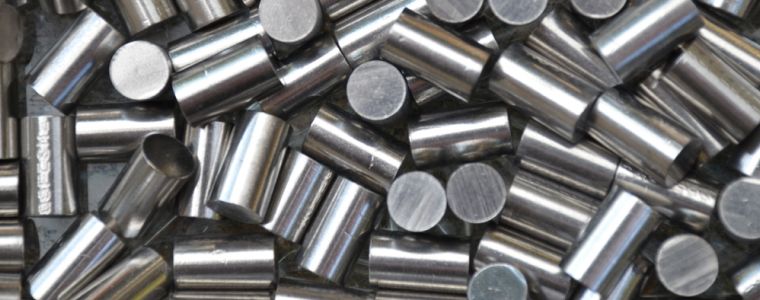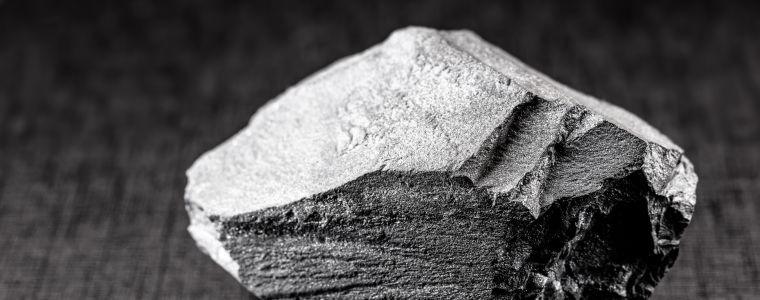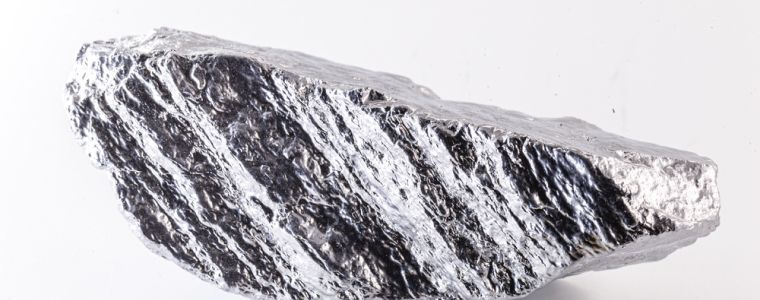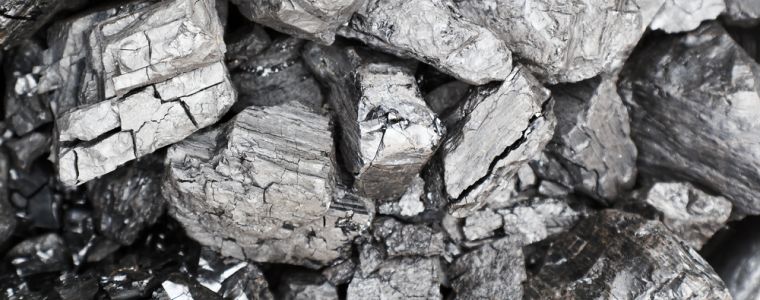Exploring Iron-Nickel-Carbon Alloys
Iron, nickel, and carbon are fundamental elements in the world of alloying, each playing a pivotal role in enhancing material properties.
We will delve into the specifics of how these elements combine to form alloys with superior qualities and discuss their diverse applications.

Properties of Iron, Nickel and Carbon in Alloys
Alloys containing iron, nickel and carbon offer distinct and beneficial properties.
Iron: The backbone of many alloys, iron is prized for its strength and ductility. It lends robustness to alloys, making them suitable for heavy-duty applications. Iron’s magnetic properties are crucial in creating alloys used in magnetic and electrical applications.
Nickel: Known for its impressive corrosion resistance, nickel ensures longevity and durability in harsh environments. It also maintains strength at high temperatures, making it ideal for high-performance alloys. Nickel’s excellent alloying capabilities allow it to blend seamlessly with other elements, enhancing the overall properties of the alloy.
Carbon: Though used in smaller amounts, carbon’s impact on alloys is significant. It dramatically increases hardness and strength, making the alloy more resilient to wear and tear. Carbon also influences the alloy’s response to heat treatment, allowing for fine-tuning properties to meet specific needs.
Together, these elements create alloys with a balance of strength, durability and versatility, suitable for a wide range of applications. This addition of iron, nickel and carbon in alloys leads to innovations in applications from construction to aerospace technology.

Advantages and Versatility of Iron-Nickel-Carbon Alloys
- Exceptional Strength: The combination of iron, nickel, and carbon in these alloys results in remarkable strength, making them ideal for heavy-duty applications.
- High Corrosion Resistance: Nickel’s presence enhances the alloy’s resistance to corrosion, extending the life of components even in harsh environments.
- Customisable Properties: The ability to adjust the proportions of iron, nickel, and carbon allows for the creation of alloys with specific characteristics.
- Enhanced Durability: These alloys exhibit superior durability and wear resistance, reducing the need for frequent replacements and maintenance.
- Versatile Applications: From aerospace and automotive industries to construction and marine engineering, these alloys have a wide range of applications due to their adaptable nature.
- Improved Heat Resistance: The alloys can withstand high temperatures, making them suitable for use in extreme conditions and high-performance areas.
- Magnetic Properties: Iron content in these alloys imparts magnetic properties, which are beneficial in various electrical and electronic applications.
- Economic Efficiency: Despite their advanced properties, these alloys can be cost-effective, offering long-term savings in maintenance and replacement costs.
- Environmental Sustainability: Many of these alloys are recyclable, supporting sustainable practices in the industry.
- Enhanced Aesthetics: The alloys can be crafted for visual appeal in architectural and design applications, providing both functionality and style. Alloys Containing Iron, Nickel and Carbon
Each of the following alloys leverages properties of iron, nickel and carbon to serve specific industrial needs, ranging from everyday items to advanced technological applications.

Alloys Containing Iron
Carbon Steel
Properties: Its iron and carbon content increases hardness and strength. Carbon steel responds well to heat treatment, allowing for alterations in its mechanical properties, such as hardening and tempering to increase toughness.
Applications: Widely used in structural materials like beams and rebar, machinery parts and tools.
Cast Iron (Fe-C)
Properties: Cast iron is known for its impressive strength and longevity, able to withstand heavy use and wear. It is particularly effective in retaining and evenly distributing heat.
Applications: Suitable for gears, pistons and cylinder heads in engines.
Stainless Steel (304 and 316)
Properties: Contains chromium, which imparts corrosion resistance; high strength, ductility and aesthetic appeal.
Applications: Used in kitchenware, medical devices, architecture and automotive parts.
AL-6XN
Properties: An iron-based superaustenitic stainless steel, known for exceptional corrosion resistance, especially in saltwater and acidic environments.
Applications: Common in chemical processing, oil and gas, and seawater equipment.
Alloy 20
Properties: Combines iron, chromium, nickel and copper for excellent corrosion resistance, particularly to sulfuric acid.
Applications: Ideal for chemical and petrochemical processing equipment, pharmaceuticals, and plastics manufacturing, where corrosion resistance is critical.
Celestrium
Properties: An austenitic stainless steel primarily composed of iron, chromium and nickel; known for its silver-like appearance and durability.
Applications: Frequently used in jewellery, such as rings, watches and decorative items, where both aesthetics and resistance to tarnishing are important.

Alloys Containing Nickel
Alloy 600
Properties: Due to its composition rich in nickel and chromium, Alloy 600 exhibits an impressive tolerance for extreme temperatures, largely attributed to its superior resistance to oxidation up to 1093 °C.
Applications: Used in parts for furnaces and the chemical processing industry, particularly in the construction of condensers and heat exchangers, where its heat-resistant qualities are essential.
Alloy 800
Properties: Composed of nickel, iron, and chromium, this alloy is capable of enduring temperatures as high as 1200 °C.
Applications: Owing to its robust corrosion resistance, it is ideal for use in furnace appliances, as well as in condensers and heat exchangers.
Alloy 825
Properties: Alloy 825, composed of nickel, iron, and chromium, excels in heat resistance, capable of withstanding working temperatures of 870 °C to 1180 °C.
Applications: Due to its strong corrosion resistance, it’s extensively used in components such as condensers and heat exchangers. The alloy’s superior properties also make it a preferred choice across various industries, including aerospace, electrical, nuclear, oil and gas, as well as in maritime applications.
Alloy C-276
Properties: The composition of Alloy C-276, which includes nickel, molybdenum, and chromium, provides exceptional heat resistance, enabling it to endure temperatures as high as 1230 °C.
Applications: Utilised in parts exposed to harsh conditions, including flanges, valves, gaskets, heat exchangers, and pressure vessels.
Alloy B-2
Properties: This alloy, composed of nickel and molybdenum, exhibits a robust resistance to oxidation and corrosion, and is extremely resistant to hydrochloric acid in a wide range of temperatures.
Applications: Used for applications such as pumps, valves, reactors, tanks, heat exchangers and condensers.
Alloy X
Properties: Alloy X, comprised of nickel, iron, and chromium, maintains high strength up to 816 °C and good oxidation resistance up to 1204 °C.
Applications: Employed in components for furnaces and chemical processing equipment, particularly in condensers and heat exchangers.

Alloys Containing Carbon
Carbon Steel
Properties: Comprised primarily of iron and carbon, it’s known for its hardness and strength.
Applications: Used widely in construction, automotive parts and tools.
Cast Iron
Properties: It is known for its impressive structural strength. It has a high resistance to wear and abrasion, which makes it ideal for parts that are subject to friction and wear.
Applications: It’s used for its durability in cookware, automotive components and machinery.
Stainless Steel (304 and 316)
Properties: While primarily iron, it also contains carbon, along with chromium and nickel. It has excellent resistance to corrosion, high strength, longevity and the ability to withstand harsh environments without deteriorating.
Applications: Used in kitchenware, medical equipment and construction.
Chromium
Properties: Chromium is highly valued for its ability to resist tarnishing and corrosion, making it ideal for harsh environments. It significantly improves the strength and hardness of the alloys it’s a part of, ensuring long-lasting durability.
Applications: Essential in superalloys for high-stress, high-temperature environments like jet engines and power plants.
The world of metallurgy has long celebrated the remarkable versatility and strength of iron-nickel-carbon alloys. These materials stand at the forefront of engineering and design, offering properties that can be finely tuned to meet industrial demands.
One of the most significant advantages of these alloys is their customisability. By adjusting the proportions of iron, nickel and carbon, along with other elements, metallurgists can create alloys with specific characteristics tailored to different applications. For further information and guidance, get in touch today.
